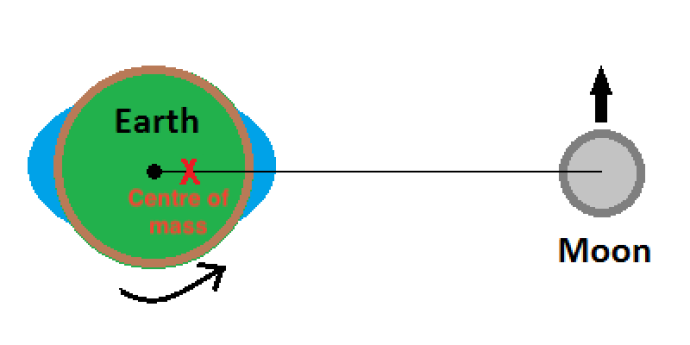The mass of an object tells us the amount of ‘stuff’ or matter it is made of.
An object’s mass remains the same wherever the object is.
It is often more useful to say how much of something there is, without worrying about where it is at the time. That is why astronomers use mass. They describe objects as more massive or less massive rather than ‘heavy’ or ‘light’.
Mass is measured in kilograms (kg). Or grams for small objects, and tonnes for larger objects.

- Centre of Mass
All the matter (or mass) in an object is distributed through its volume. The centre of mass is the exact centre of all the matter in an object. The centre of mass will have same amount of mass in every direction around it.
Two objects can have a common centre of mass. A good way to think about this is to imagine that the centre of the Moon and the centre of the Earth are connected by a very long pole. The centre of mass is the one point on the pole where it would balance on one finger.
Image CreditThis work by The Schools' Observatory is licensed under All rights reserved
CreditThis work by The Schools' Observatory is licensed under All rights reservedCentre of mass of the Earth and the Moon (the left arrow shows the Earth's rotation, and the right arrow shows the Moon's movement) The centre of mass is always closer to the more massive object. If the Earth and the Moon were exactly the same mass, the centre of mass would be exactly halfway between them.
The centre of mass is an important idea in astronomy. We often think of the planets orbiting the Sun and the Sun staying still. In reality, the Sun and the planets all orbit the centre of mass of the Solar System. But because the Sun is so massive, the centre of mass is inside the Sun. So the Sun just ‘wobbles’ a bit as it orbits the centre of mass. Looking for a star wobbling around its centre of mass is a good way of finding exoplanets.
